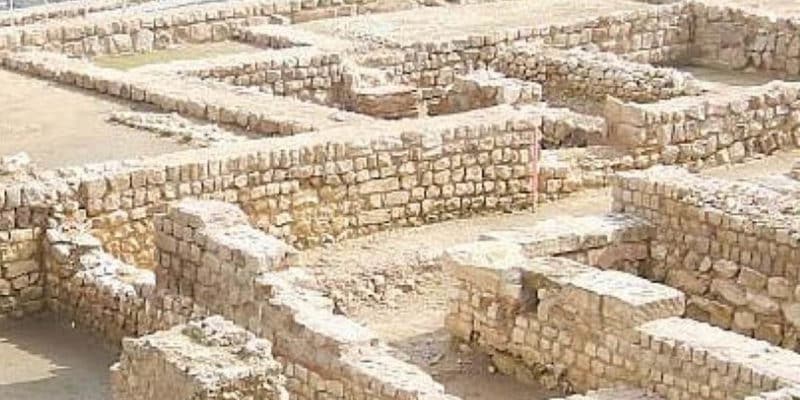During several excavations carried out in the late 20th century (notably between 1976 and 1982 at the Biache-St-Vaast metallurgical sites), significant traces of prehistoric occupation were discovered. This is a remarkable Paleolithic site dating back some 170000 years. The low-lying terraces of the Scarpe river, with their favourable climatic conditions, helped to establish populations. The Fresnicourt dolmen (Fresnicourt-le-Dolmen between Olhain and Verdrel) and the twin stones at Acq, some of which date back 2,500 years, come to mind not far from Arras. Of course, in Roman times, we have more information about the populations of the area we now call the Artois. A period rich in the movement of different populations, and thus the beginnings of the history of Arras.
Gallic and Roman times in Arras
Archaeological discoveries became very numerous from the Iron Age onwards, between 450 and 50 BC. Numerous remains can be found in the area between the Scarpe, Crinchon and Gy rivers. This is particularly true of some of the surrounding towns and villages, such as Duisans, Dainville, Beaurains, Fampoux, Saint-Laurent-BLangy and Hamblain-les-Près, where a number of huts have sprung up (for example, Mont César near Etrun and Pont du Gy near Maroeuil). At the time, Gallic activities were mainly agricultural, with our ancestors raising pigs and sheep and growing cereals. But even then – and the site would be remarkable for this too much later – people living in the Arras region often offered wool spinning and weaving, pottery and metallurgy (the low furnaces at Hamblain-les-Près still bear witness to this activity today).
Caesar’sWar of the Gauls mentions the Atrebates. He classifies them with the Belgian tribes from Germania who invaded the Celtic parts of northern Gaul for two centuries (between the 4th and 2nd centuries BC). While it’s difficult to know the exact size of the population in the region, we do know that the battle of Sabis involved some 15,000 Atrebat warriors in a coalition with the Nervians.
Com, the king of the Atrebates appointed by Caesar
In 54 BC, a warrior named Com distinguished himself during Caesar’s expedition to Brittany. An excellent horseman and fine diplomat, Com was particularly successful in taking command of the Morins. A Gallic people from Belgium, their territory stretched from the mouths of the Aa to the Canche valley (Morinie). Today’s Boulogne-sur-Mer was the Gallic people’s most important port, providing easy access to Brittany (present-day England).
Com later distinguished himself in different ways. Between 53 and 52 BC, he was suspected of plotting against the Romans and narrowly escaped death in an ambush. Having been an ally of Caesar’s, he became his enemy and took a relief army to save Vercingetorix besieged at Alesia. This was obviously a failure, and he was defeated in the Beauvais region. Com’s story didn’t end there, however, as he managed to escape across the Rhine and continued to fight in Atrebatia. It wasn’t until 51 BC that Com submitted to Mark Antony and fled to England on the banks of the Thames. Here, remarkably, he founded another kingdom of Atrebia.
Nemetacum: Ancient Arras
Nemetacum is a name of Celtic origin, evoking a sacred place or wood. The first recorded mention of the town is by Ptolemy in the second century AD, but Caesar refers to it in the Gallic Wars as Nemetocenna. A Gallo-Roman city, Nemetacum was founded in the first century, and today the remains and the museum can be found on the heights of Arras, at the top of rue Baudimont. Of particular interest is the sanctuary of Attis and Cybele, dating from the first half of the 3rd century. The sanctuary was destroyed around 375.
The town flourished until the end of the third century A.D. with the Germanic invasions, but in 406-407, the Germans destroyed the town. The end of Nemetacum.
It wasn’t until 428 that Clodion le Chevelu and the Salian Franks took the town, negotiating with the Roman general Aetius during his capture of Artois and Cambrésis. This marked the beginning of the Federated Franks fighting for Rome. In 451, the town was once again destroyed by the Huns and Attila. The first bishopric, which marked the beginning of the Middle Ages, was founded in 499 by St Vaast. However, it was soon attached to the bishopric of Cambrai.
X.D.
